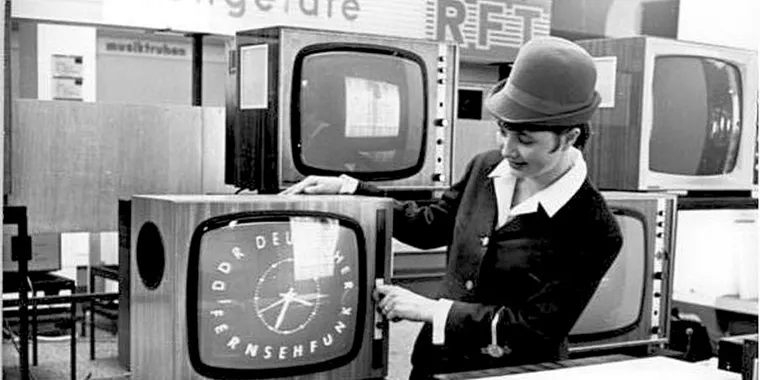The History of the Beginnings of Television Advertising (1941–2006)
Television advertising has evolved into one of the most influential tools in modern marketing, but its roots date back to the early 20th century. Closely linked to the growth of television technology, advertising on TV began as an experiment and quickly transformed into a cultural and economic powerhouse. From the first ten-second spot in 1941 to the dominance of Super Bowl commercials in the early 2000s, television advertising has continually adapted to changing media landscapes and consumer behavior. The first official television advertisement aired in the United States on July 1, 1941, during a Brooklyn Dodgers vs. Philadelphia Phillies baseball game on WNBT, a New York-based NBC affiliate. The ad promoted Bulova watches, showing a clock with the slogan “America runs on Bulova time.” It cost the company only $9 to air (Museum of Broadcast Communications, n.d.), but it marked the birth of a new advertising medium that combined visuals, sound, and storytelling.
The 1940s were mostly slow for television growth due to World War II, which redirected manufacturing and technological development toward the war effort. However, once the war ended, the late 1940s and early 1950s saw a boom in television ownership and programming. By 1955, over half of American homes owned a TV set (Spiegel, 1992). This rapid expansion created a golden opportunity for advertisers. In the 1950s, television advertising borrowed from radio by using a sponsored program model. Brands such as Colgate, Texaco, and GE sponsored entire shows like The Colgate Comedy Hour or Texaco Star Theater, which allowed companies to embed their brands directly into entertainment. These shows were often associated with the products they advertised, strengthening brand recall and loyalty (Boddy, 1990).
However, as television networks grew and sought greater revenue, they shifted toward selling individual advertising spots during breaks instead of allowing one sponsor per program. This new format gave businesses flexibility and allowed multiple advertisers to share airtime. It also enabled television networks to exert more control over programming while increasing profits. By the 1960s, the 30-second spot had become the industry standard. The 1960s and 1970s also saw major advancements in color broadcasting and televised events. Advertisers began crafting commercials that were more cinematic and emotionally driven. Iconic slogans like “I’d like to buy the world a Coke” and unforgettable jingles helped solidify television’s persuasive power (Sterling & Kittross, 2002). The introduction of Saturday morning cartoons brought with it an entire genre of toy and cereal ads targeted at children, while prime-time television reached families during dinner hours.
Television advertising reached a new peak with the rise of Super Bowl commercials in the 1980s and 1990s. Apple’s 1984 ad introducing the Macintosh computer is often cited as one of the most influential commercials of all time. Airing during Super Bowl XVIII, the ad broke with traditional marketing by using cinematic storytelling and a bold message, setting the tone for future high-budget, high-impact advertising during major events (Isaacson, 2011).
By the early 2000s, cable television had fractured audiences into more targeted demographics, giving advertisers the ability to reach specific viewers on networks like MTV, ESPN, and HGTV. At the same time, TiVo and DVR technologies began to challenge traditional ad viewing by allowing users to skip commercials altogether. These changes forced advertisers to find new ways to engage viewers, including product placement, sponsorships, and more creative, memorable content.
By 2006, internet advertising had begun to rise, but television still held the majority of global advertising dollars. According to Nielsen, U.S. TV ad spending in 2006 totaled approximately $70 billion (Nielsen, 2007), reflecting its continued dominance even amid shifting trends. However, the seeds of digital disruption had been planted, signaling a coming transformation in how ads would be consumed in the years to follow. In conclusion, the history of television advertising from 1941 to 2006 is a story of rapid growth, creative innovation, and technological adaptation. From humble beginnings with a $9 watch commercial to a $2.5 million Super Bowl spot, television advertising played a central role in shaping American culture and global consumerism.
References
Boddy, W. (1990). Fifties television: The industry and its critics. University of Illinois Press.
Museum of Broadcast Communications. (n.d.). Television advertising. Museum of Broadcast Communications. https://www.museum.tv/eotv/televisionad.htm
Nielsen Media Research. (2007). Advertising trends and statistics. Nielsen. https://www.nielsen.com
Spigel, L. (1992). Make room for TV: Television and the family ideal in postwar America. University of Chicago Press.
Sterling, C. H., & Kittross, J. M. (2002). Stay tuned: A history of American broadcasting (3rd ed.). Routledge.





No comments:
Post a Comment